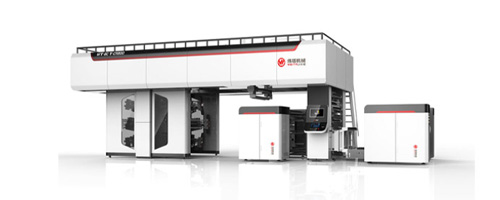 RU
RU
 EN
EN
 CN
CN

Position:HOME > Ink Knowledge

The pattern on the printing plate is prominent, the blank place is concave, through the anilox rollers to transfer ink, generally printed with water-based and UV inks, can reach 400 meters per minute. Flexographic printing is also a kind of letterpress printing.

The printing pattern on the surface of the printing plate is concave, the blank space is protruding, the printing ink layer is very thick, the color is bright, the line is clear, and the saturation is high. Solvent-based ink and water-based ink are available!

The graphic part and the blank part is in the same plane, to the surface of the printing plate inking, only the graphic part of the adsorption of ink, plate work is simple, low cost, suitable for large quantities of printing, mainly using solvent-based inks.

The printing plate consists of a number of small sieve holes, non-graphic part of the mesh is coated with a photopolymer coating sealed, printing adaptability, thick ink layer, three-dimensional sense of strong, bright colors, mainly solvent-based ink.
In the process of printing paper bags with water-based ink, color management is a crucial and complex step that directly affects the appearance quality, customer satisfaction, and market competitiveness of the paper bags.
Aug 12 2024
There are many comparisons between flexographic printing and offset printing. Flexographic printing has gained people's approval because it uses water-based ink, which is more environmentally friendly.
Aug 09 2024
UV ink and water-based ink are both environmentally friendly inks widely used in the printing industry. So, what are the differences between the two
Aug 08 2024
UV inks and solvent-based inks are particularly widely used in the current printing industry, although solvent-based inks are limited by environmental protection policies, and the use is gradually decreasing,
Aug 07 2024
Solventless UV ink is a special type of ink, its biggest feature is that it does not contain volatile solvents, completely rely on ultraviolet (UV) irradiation for curing.
Aug 06 2024
The gravure water-based ink of Huizhou StarColor Technology Co., Ltd. is widely used in various printing fields, especially in food packaging, medical packaging,
Aug 05 2024
UV ink, the full name of ultraviolet curing ink, is a special ink that can quickly cure into a film under ultraviolet (UV) irradiation. It is unique in that its drying process does not rely on traditional solvent volatilization
Aug 04 2024
UV ink achieves rapid drying effect through UV irradiation. Currently, the main UV light sources are mercury lamps and LEDs. Next, we will compare the characteristics of the two light sources
Aug 02 2024
In daily life, napkins as a frequent guest on our dining table, are receiving increasing attention from consumers for their safety and environmental friendliness.
Aug 01 2024
Printed patterns on napkins are not only for their appearance, but also for advertising purposes. A beautiful pattern on napkins can leave a deep impression on customers
Aug 01 2024